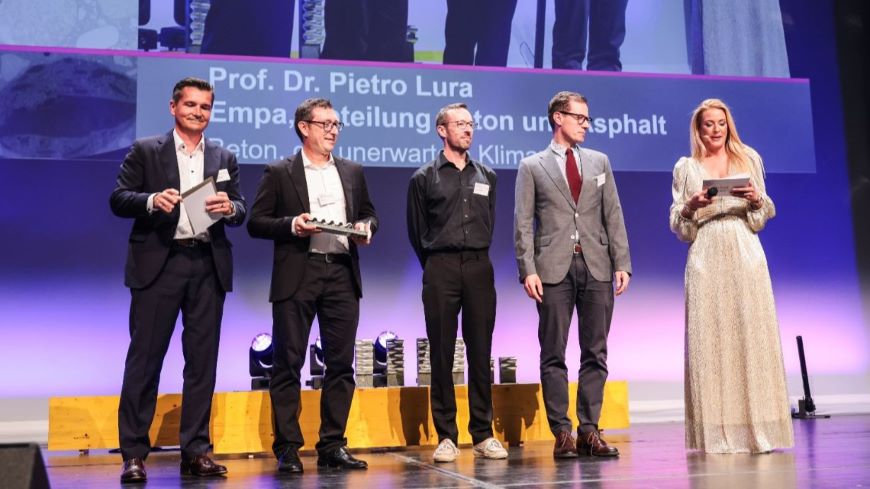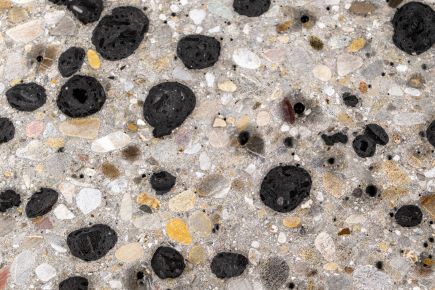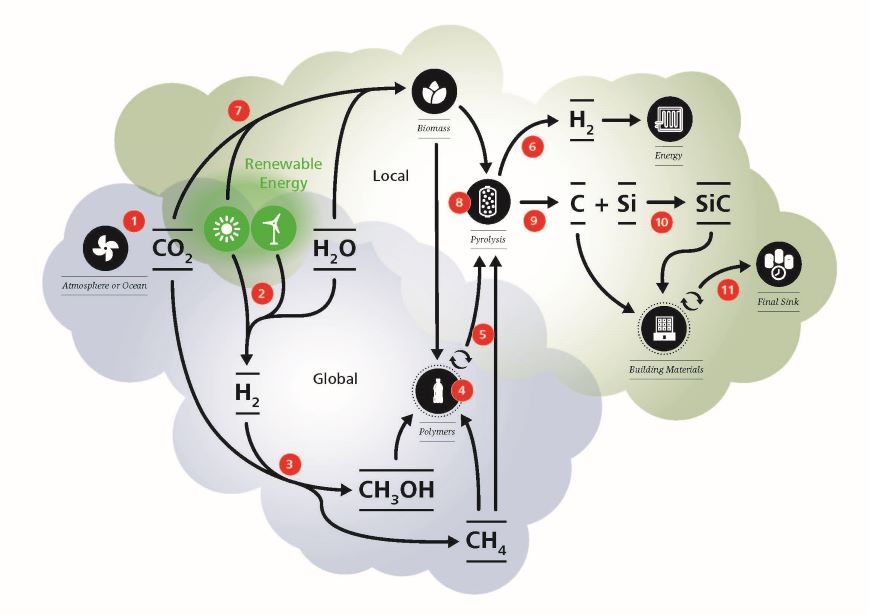Award-winning concrete to save the climate
The "Oscar" for engineering achievements goes to … Empa!
Empa is one of the winners of the Building Award 2025. A team from Empa's Concrete and Asphalt lab was recognized for its CO₂-storing concrete – a promising approach to significantly curbing emissions in the construction industry. The award ceremony took place at the KKL Lucerne in late June.

The Building Award is presented every two years and recognizes outstanding engineering achievements in the Swiss construction industry – in the style of the Oscars for the film industry in several categories. This year, Empa was honored in the Research, Development, Start-ups category for its CO₂-storing concrete, which contains carbon pellets. The Empa team – Pietro Lura, Mateusz Wyrzykowski, Nikolajs Toropovs, Daniel Grossegger and Frank Winnefeld – accepted the Building Award 2025 in front of over 800 guests at the KKL Lucerne. The independent jury consisted of experts from industry, planning, research, engineering and administration and awarded prizes to one winning project in each of six categories.
Concrete, an unlikely climate saver

Cement production is responsible for around eight percent of global CO₂ emissions. In order to reduce this proportion in future, Empa is investigating the potential of CO₂-neutral or even CO₂-negative concrete. A team from the Concrete and Asphalt lab has therefore developed a process with which biochar can be integrated into concrete. Although first concrete products with biochar already exist, the biochar is often added untreated. “Biochar is very porous and therefore not only absorbs a lot of water, but also expensive additives that are used in concrete production,” says Empa researcher Mateusz Wyrzykowski. The researchers are therefore focusing on pellets made of biochar, water and cement that could replace part of the conventional aggregate in concrete.
The results so far are promising: The carbon pellets can be used to produce CO₂-neutral or even CO₂-negative concrete, which can be used like conventional concrete in buildings and infrastructure. "We are currently working with partners on the industrial production of our CO₂-negative pellets. The first application in a building will be in the new NEST unit, Beyond Zero,“ says Pietro Lura, Head of Empa's Concrete and Asphalt lab. The unit will be part of Empa and Eawag's modular research and innovation building NEST. It showcases promising CO₂-reduced and CO₂-negative innovations that can be used in the construction sector – and how buildings can even act as carbon sinks in the future.
The goal: mining the atmosphere
However, a holistic approach goes beyond biochar as a carbon store. As part of the large-scale research initiative, Mining the Atmosphere, Empa is working on a concept in which excess CO₂ is to be extracted directly from the atmosphere and used to produce various materials and products. The aim is to create a completely new global economic model and a corresponding industrial sector in which CO₂ serves as the raw material of the future.
The captured CO₂ is first converted into basic chemicals such as methane or methanol. These in turn can be further processed to replace conventional building materials and petrochemical products. At the end of their life cycle, these carbon-rich materials are to be stored in special landfills to permanently bind the (once atmospheric) carbon. Synthetically produced methane can also be used to transport energy from sunny regions to countries with seasonal energy shortages.
However, according to the Empa researchers, large-scale implementation requires further progress in materials science and process development, particularly in order to make optimal use of decentralized and fluctuating renewable energies. Moreover, a focus on new business models, economic incentives and suitable regulatory frameworks is necessary to make a low-carbon society a reality.

Prof. Dr. Pietro Lura
Concrete & Asphalt
Phone +41 58 765 4135
Dr. Mateusz Wyrzykowski
Concrete & Asphalt
Phone +41 58 765 4541
The Building Award is sponsored by Infra Suisse, the Swiss Association of Master Builders SBC and the Swiss Association of Consulting Engineers suisse.ing. Other partners supporting the Building Award are well-known Swiss companies, organizations and associations. The Building Award is organized and run by the bilding foundation. It promotes young engineers in the construction industry.
-
Share






